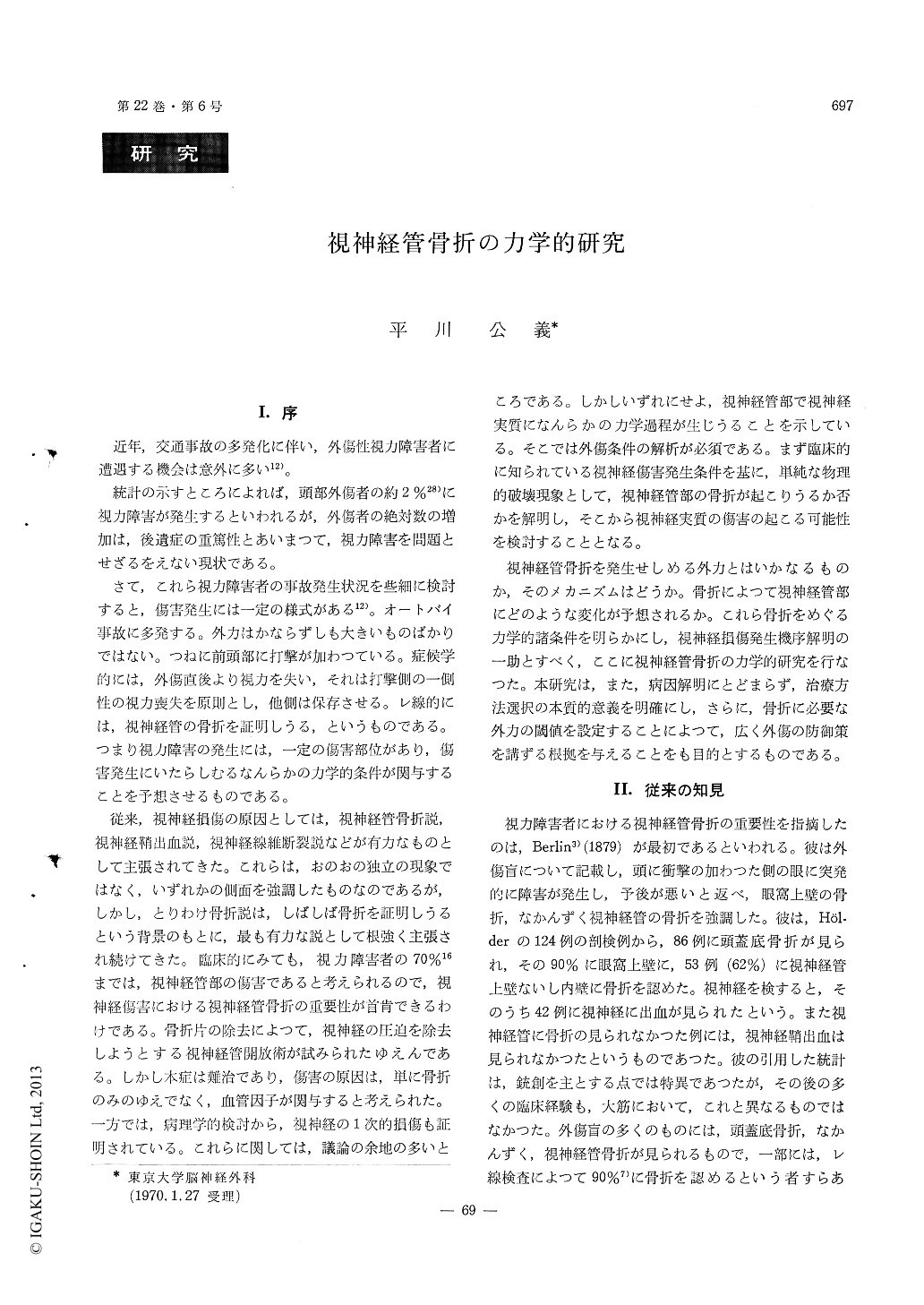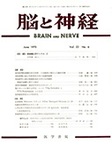Japanese
English
- 有料閲覧
- Abstract 文献概要
- 1ページ目 Look Inside
I.序
近年,交通事故の多発化に伴い,外傷性視力障害者に遭遇する機会は意外に多い12)。
統計の示すところによれば,頭部外傷者の約2%28)に視力障害が発生するといわれるが,外傷者の絶対数の増加は,後遣症の重篤性とあいまつて,視力障害を問題とせざるをえない現状である。
1) These studies were performed to investigate the threshold of the impact force and to clarify the mechanism of the tracture of the optic canal, which is thought to be closely relevant to the ipsilateral optic nerve injury.
2) The stress coat method has revealed that when an impact force was given to the skull in the frontal area, stress lines appeared on the roof of the orbit toward the optic canal on the ipsilateral side of the blow. This means that the roof of the orbit and the optic canal are depressed from above at the moment of impact.
3) After strain gauges were patched bilaterally to the upper walls of the optic canals, each on the brain side and on the ocular side, the skull was compressed obliquely from the front to the occiput statically and the stress-strain curve was obtained. Strain was recorded characteristically on the side compressed, as if the upper wall of the optic canal were crushed downwards, while the other side showedlittle effect of strain. There was a few exceptions, where the canal was crushed in lateral direction. The skull was destroyed by 300-500 kg load.
4) Dynamic tests were added, using the skull filled with gelatin and covered with silicon skin. The behavior of the upper wall of the optic canal was the same as in the static tests. Fracture of vault occured by 60-100 centimeter fall on a steel plate. Maximum load factor was greater than 110. The optic canal was destroyed in 20-60 centimeter fall by about 70-100 load factor.
5) Bending test was performed on the bone of the upper wall of the optic canal. Young's modulus was 172 kg/mm2 and bending strength was 0.6 kg/mm2 on the average. The former was about half and the latter was one-tenth of the corresponding value of the vault of the skull. The upper wall variesin thickness and in some individuals the canal can destroyed easily by a trivial impact.
6) A fiberscope was inserted through the fora-men magnum, to observe from behind the process of destruction of the optic canal. The process was shown in the movie frames.
7) These experiments show that the optic canal is made fragile, so it can be easily fractured. With a lethal blow, the canal may be destroyed and split apart, and the optic nerve may be cut by bone fragments. In a minor impact, momentary depres-sion of the optic canal may possibly occur with or without fracture, and give the optic nerve and its vascular system a damage by shearing effect. Ir-reversible visual loss is brought about by the secon-dary edema following this depression.

Copyright © 1970, Igaku-Shoin Ltd. All rights reserved.


